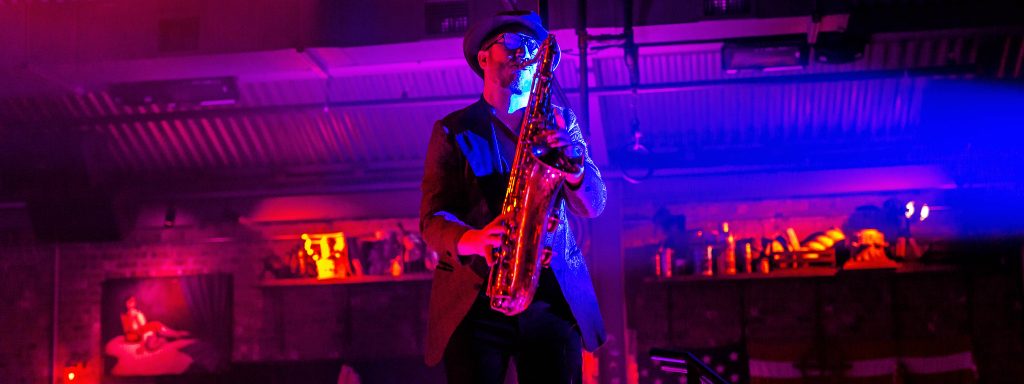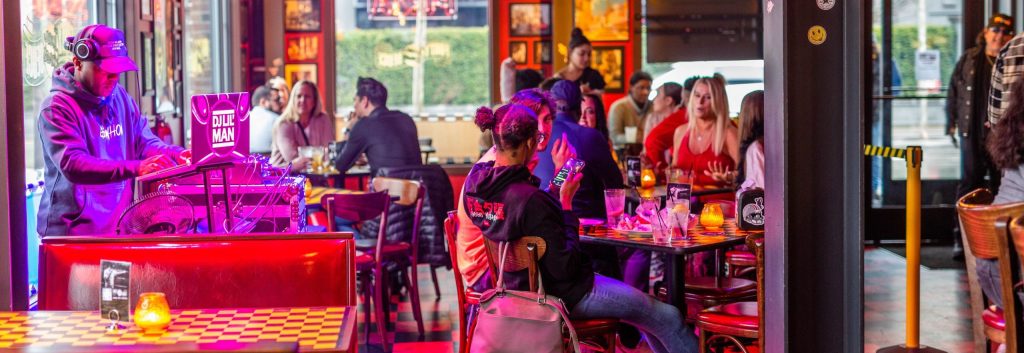Retailers must focus more on merchandising and enhancing the in-store experience
By Yaromir Steiner, Published in Shopping Center Business
For anyone in the industry, it’s impossible to avoid the topic of online sales and the “dramatic” impact of the internet on traditional brick-and-mortar retail. Many retailers are clearly worried, and others are uncertain about how they should respond to the growth of online retail. That combination of concern and confusion has led to some questionable decision making about how and where to allocate resources.
The media does its part to perpetuate the notion of the online behemoth, with attention-getting headlines and a persistent media narrative that reinforces the internet is taking over mentality. Every time a brand closes stores or cuts jobs, and every time a company announces weaker-than-anticipated sales numbers, the impact of online competition is not only cited, it is more than often blamed.
But rhetoric is not reality. Conventional wisdom is often wrong. The U.S. Department of Commerce reported that “e-commerce sales in the third quarter of 2016 accounted for 8.4 percent of total sales”, a number that is consistent with the approximately 8% figure that ICSC and other organizations have reported in recent years. While that number isn’t stagnant, the growth of online sales as a percentage of overall retail sales has slowed significantly in the last two or three years.
To look at it another way, the annual sales of just three Costco stores here in Columbus, Ohio are approximately equivalent to the sales numbers that online giant Amazon is able to generate in the same MSA.
So if the internet is not the Big Bad Wolf, why are numbers down for so many brick-and-mortar retailers? The famous FDR quote that “the only thing we have to fear is fear itself” applies here: it may be that it isn’t the direct impact of online retail, but the fear of virtual competition that is causing brick-and-mortar brands to flounder. Retailers shouldn’t be trying to beat Amazon at its own game–they should be focusing on what they do well: and that begins with the in-store experience. Too many brands are devoting a disproportionately high percentage of available resources to expensive and sometimes hastily thrown together attempts to develop a new app or new online delivery model. Even Amazon, with all of its formidable infrastructure, experience and unmatched economies of scale, has trouble making the dollars work with free or nearly-free delivery.
Every dollar that goes to subsidizing shipping, developing new online and mobile platforms, or adjusting the supply chain to accommodate online sales is a dollar that is not going to brick-and-mortar fundamentals. Fundamentals like merchandising, upgrading stores and enhancing the shopping experience. If the experience of visiting your store is not a pleasant one, why would a consumer ever get up from behind their computer, get in a car and drive to your location?
The consequences of spending too much time and too much money chasing after exaggerated online competition can be significant. There is more than one reason why some department stores have struggled over the last 10-20 years (and particularly over the last decade or so), while others have remained competitive. European department stores like Selfridge’s and Bonmarché have consistently displayed more creativity, more proactivity, more of a proclivity for merchandising and marketing flexibility, and more of an ability to create and sustain vibrant, dynamic and engaging environments. That fits into a larger pattern that extends well beyond large shopping centers: many European and Asian brands have done a much better job of finding ways to prioritize brick-and-mortar environments and experiences.
The good news is, some U.S. brands are doing a good job of continuing to prioritize merchandising, upgrading and enhancing their stores, and creating memorable and engaging environments in the process. Familiar names like Victoria’s Secret, Vineyard Vines and Swarovski have all done well to create that standout in-store experience. Victoria’s Secret has spectacular LED screens and video walls, which are not only visually engaging, but afford an ideal opportunity to display/present merchandise in a more connective way.
We are also seeing brands succeed by offering a different kind of brick-and-mortar experience: one based on engagement and participation. From outdoor retailer REI, which offers classes and employs staffers who engage with customers and provide knowledgeable, passionate and hands-on counsel, to frozen yogurt brands embracing a self-service model that is both cost-effective for owners and fun for customers. LEGO and Lululemon have also used classes and special events to ratchet up the degree of experiential engagement with the customer.
The bottom line is that retailers need to be retailers. Think and act like a merchant. I have personally witnessed the CEO of a major international brand walk into a new store a few days before opening and spend an hour making subtle changes to the lighting, displays, music and mannequins. That kind of mercantile attention to detail is at the heart of true place-making. On the development side, a handful of forward-thinking developers have been successfully utilizing similar strategies for some time now, using aesthetic and experiential features to make their projects more inviting and engaging.
While every brand and every store is different, there are a few universal principles that retailers may want to consider as they focus on improving their in-store experience and refocusing on brick-and-mortar basics:
Design and emotion
Great design is an important step to creating a great experience. Because, in many important ways, design is experience. Lighting alone is hugely important. Many stores have lighting that is simply inadequate (not illuminating the merchandise correctly, too bright, not bright enough, not positioned correctly, etc.). The experience of being in a retail environment should be an emotional one–not simply a sterile prelude to a clinical transaction. The store, and the experience of shopping, should make an impact on you. Ideally, it forges an emotional connection–one that cements a memorable and defining sense of place.
Marketing and messaging
Far too many retailers are not marketing any more–certainly nothing like they used to. Location-based, targeted marketing is extremely effective, and should be utilized far more often. Ironically, developers have moved in the other direction: some of the most innovative, successful and creative developers have become ardent and highly effective marketers. Think carefully before embracing a national standardized generic marketing initiative: the efficiency gains that come with standardized messaging and marketing may be outweighed by marketing efforts that don’t effectively target potential customers in your market.
Analytics and insights
While much is made of online analytics and information gathering, in-store retail analytics continue to evolve, giving retailers access to a host of new and extraordinarily powerful tools. The information they provide (tracking customer activity on-site to monitor browsing times, average time in store, what items were looked at and tried on, purchases, and much more) can provide invaluable insights into everything from demographics and shopping patterns to merchandising and store design.
To remain competitive in an ever-evolving omichannel world, retailers must invest more of their financial resources and creative energies in their physical stores. By recognizing and leveraging the power of their brick-and-mortar spaces and places they will realize that inline and online can truly be symbiotic.






